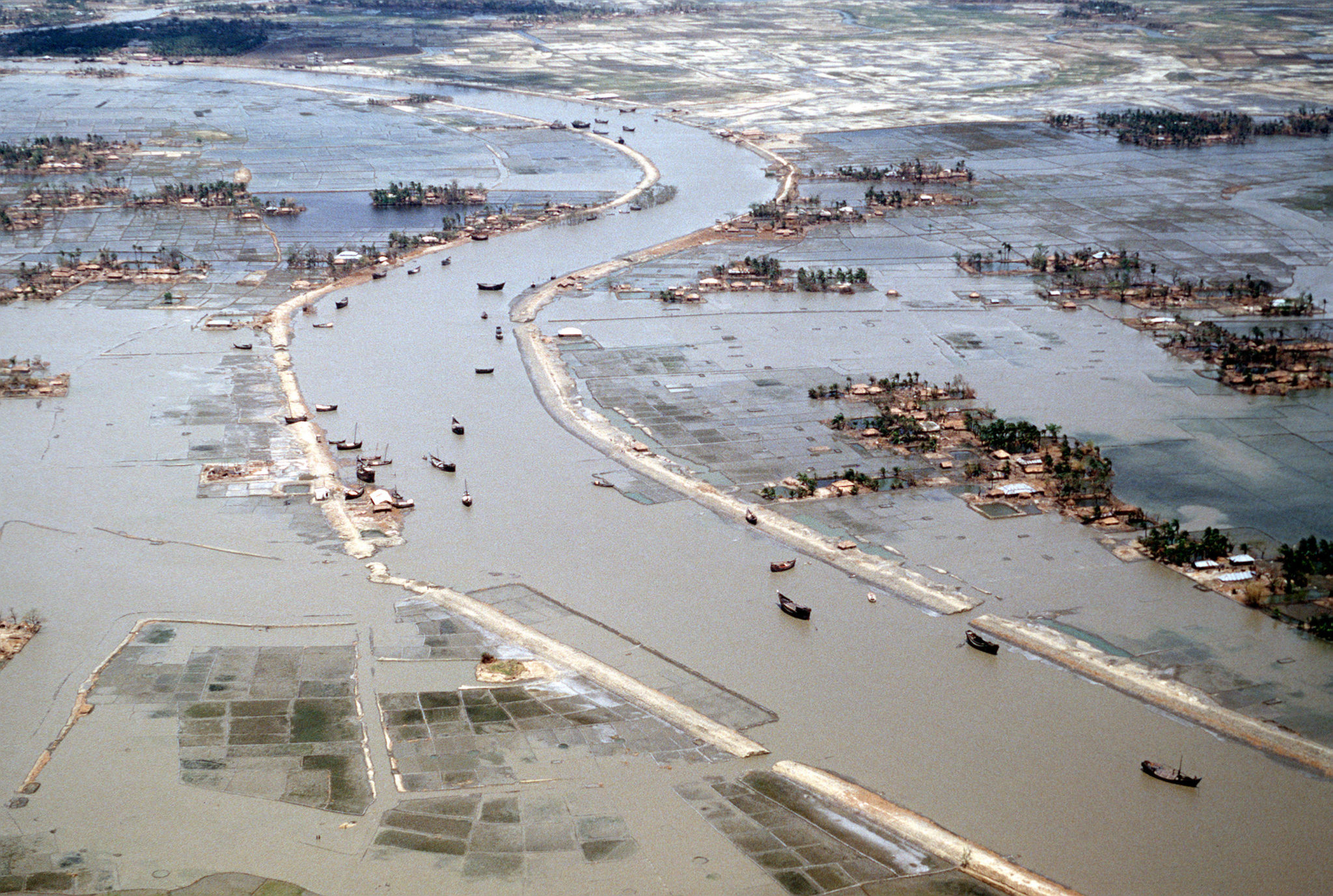Climate Change Forecasts Are Getting More Precise
Accurate long-term weather predictions for highly populated areas of the world would be beneficial to life, but they’ve been elusive. However, several new research studies show that scientists may soon possess the knowledge to predict climate for large regions of the globe—a development that may help avert catastrophic flood events and enhance economic well-being.
In Genesis 1 we learn that God assigned the human race the responsibility of managing Earth’s resources for their benefit and the benefit of all life. Part of fulfilling that responsibility requires weather and climate change forecasting capability.
Early on, humans developed the ability to reasonably forecast the weather one or two days in advance (Matthew 16:2-3). In a few regions, they could accurately forecast the weather a week in advance. For example, in Namibia (Southern Africa), for most of the year, one would be correct to predict that it will not rain. Where I grew up in coastal British Columbia, for six months of the year the visibility of the mountains is all we needed to predict the weather: If you can see the mountains, it is going to rain; if you can’t see the mountains, it is already raining.
With the placement of hundreds of weather balloons and satellites, it is now possible to accurately predict the weather 10–14 days in advance anywhere in the world. In some cases, weather projections as much as three months in advance are possible.
Climate Change Prediction Status
However, as anyone who has read my book Weathering Climate Change1 will know, we are still a long way off from being able to accurately predict what the future climate will be like for any large region of the world. Until just a few weeks ago, predicting climate change was roughly where we were with predicting weather over a century ago. Unlike predicting the future weather for a city two weeks in advance, predicting the future climate for a nation two to six decades in advance requires much longer-term and more comprehensive climate data and detailed three-dimensional atmospheric and hydrospheric computer models.
When I completed the writing for Weathering Climate Change nearly two years ago, I agreed with most climatologists that not until at least 2050 would we possess accurate global climate predictions. Given this state of affairs, I am pleased to report on two recent scientific papers that for the first time give us a reasonably accurate prediction for two components of the global climate for two large regions of the world.
First Accurate Climate Predictions
The two climate predictions call for increased rainfall in mid-latitude (Earth’s subtropical and temperate zones) coastal regions and increased tropical cyclone (hurricane, typhoon) exposure. In both cases, increased storm damage and flooding will result.
Worldwide, for both the poorest and the richest nations, flood events rank as the number one natural disaster in terms of human casualties and economic losses. The economic losses alone from flood damages added up to at least 651 billion US dollars from 2000–2019.2
Increase in Atmospheric River Precipitation
The first prediction is based on a study of atmospheric rivers. Atmospheric rivers are atmospheric conduits where concentrated water vapor is transported from hot, humid regions in the tropics to coastal regions in the mid-latitudes.
Two Yale University geophysicists, Seung Baek and Juan Lora, combined an analysis of weather records and a series of coupled model experiments to demonstrate, in spite of an exponential expansion in human activity and technology, that from 1920 to 2005 there has been little or no change in atmospheric river characteristics.3 Baek and Lora then sought to determine why.
The pair of researchers determined that two human activities that should have altered atmospheric rivers in major ways, in fact, counterbalanced one another. The increased pumping of industrial aerosols into the atmosphere operated to weaken atmospheric rivers. Meanwhile, the increased concentrations of atmospheric greenhouse gases operated to strengthen atmospheric rivers. For 85 years the weakening of atmospheric rivers by increased industrial aerosol emissions nearly perfectly counterbalanced the strengthening of atmospheric rivers by increased greenhouse gas emissions.
Baek and Lora showed, however, that the near-perfect counterbalancing will not be sustained. The implementation of new technologies has already reversed the upward trend in industrial aerosol emissions. But no such reversal is occurring for greenhouse gas emissions. Though the rate of increase in greenhouse gas emissions is declining, the concentration of greenhouse gases in the atmosphere is still rising. Furthermore, the geophysicists realistically argue that it will take at least three more decades before foreseeable technological implementation will bring down the levels of greenhouse gases in the atmosphere. Therefore, they project steep intensification of atmospheric rivers during the next 30 years.
Assuming no breakthroughs that bring down the levels of atmospheric greenhouse gases occur, Baek and Lora calculate that mid-latitude coastal regions will experience atmospheric river precipitation increases of up to two centimeters per month. Coastal regions of western Europe and the coasts of Oregon, Washington, and British Columbia, for example, will experience much greater and more numerous storms and floods.
Increase in Tropical Cyclones
The second prediction is based on studies of the impact of global warming on the generation of tropical cyclones and the impact these cyclones will have on the human population. The studies involve predicting the increase in the number and intensity of tropical cyclones, the expected changes in the global human population level, and changes in the percentage of the global human population that reside in tropical cyclone-prone regions.
Flood damage and flood event casualties have increased globally owing to two factors. The first is an increase in the frequency and severity of flood events due to global warming. The second is an increase in human population and economic activity in flood-prone regions.
A team of eight environmentalists, geographers, and geologists led by Beth Tellman used daily satellite imagery to measure how people were affected by 913 major flood events that occurred from 2000 to 2018.4 The team’s measurements affirmed what all the leading global climate models have predicted: global warming increases both the frequency and intensity of flood events.
Tellman and her colleagues showed that from 2000 to 2018 the population in flood-prone regions increased from 58 million to 86 million. This increase was 84% greater than the growth of the global population. It was also ten times higher than previous estimates. This kind of monitoring will continue into the future because Tellman’s team produced a Global Flood Database that will be updated regularly.
In fact, a team of five environmentalists led by Tobias Geiger made use of the Global Flood Database, computer simulations of tropical cyclones, and environmental impact models to quantify the human population exposure to cyclone damage and casualties for different magnitudes of global mean temperature increases and future human population growth and distribution.5 Assuming no change in the global human population or change in the distribution of that population, Geiger’s team determined that a 1°C increase in the global mean temperature will put 26% more people (33 million more humans) at risk of tropical cyclone damage and casualties.
Most demographic models predict that the human population will peak around the year 2050 and decline thereafter. Based on such demographic models, Geiger’s team shows that if the global mean temperature increases by 2°C by 2050, 41% more people (52 million more humans) will be seriously impacted by tropical cyclones. However, if a 2°C global mean temperature increase is delayed until 2100, then only 20% more people (25 million more humans) will be seriously impacted by tropical cyclones.
Theological Implications
Part of our responsibility in managing Earth’s resources for our maximal benefit and that of Earth’s life is to acquire reliable and comprehensive measurements of the conditions of Earth’s environments and resources. Without such measurements, we run the risk of unintended consequences in our management of Earth’s environments and resources. Thanks to the studies by Baek and Lora, Tellman and her colleagues, and Geiger and his team, we have made significant progress in achieving such measurements.
Geiger’s team calculated that if peak global warming could be delayed until 2100, cumulatively a total of over 1.8 billion people could be saved from the deleterious consequences of tropical cyclones. No one has yet calculated what such a delay would do to save people living in mid-latitude coastal regions from the adverse effects of increased atmospheric rivers. Conservatively, the cumulative total likely will exceed 200 million. That adds up to a total of 2 billion people not negatively impacted.
As I explain in Weathering Climate Change, our response to climate change must take into account two important biblical principles. First, the Bible teaches that all humans are fallen. Therefore, it is unrealistic to expect anything other than that most humans will be selfish and reluctant to choose substantial economic sacrifices in order to mitigate climate change. Second, God’s charge to make humans responsible for managing Earth’s resources for all life implies that God has designed Earth, Earth’s resources, and Earth’s life so that there will be win-win solutions to our management challenges. Therefore, if we search diligently we will find ways to mitigate climate change so we benefit economically and socially and the world’s ecosystems also benefit.
Furthermore, I believe it is only through such win-win solutions that we will be able to give the peoples and nations of the world strong enough economic incentives to mitigate climate change before it is too late. For these reasons, I devoted much of Weathering Climate Change to describing several initiatives and available technologies that would mitigate climate change and improve the world’s ecosystems while boosting economic well-being all around the globe.
Together, these studies provide us with yet more economic incentives. While the solutions I offered in Weathering Climate Change show how we can increase our economic capacity and health, their research shows us how we can preserve them. Our Genesis 1 assignment lies before us.
Endnotes
- Hugh Ross, Weathering Climate Change: A Fresh Approach (Covina, CA: RTB Press, 2020).
- Centre for Research on the Epidemiology of Disasters, United Nations Office for Disaster Risk Reduction, The Human Cost of Disasters: An Overview of the Last 20 Years (2000–2019), 2020.
- Seung H. Baek and Juan M. Lora, “Counterbalancing Influences of Aerosols and Greenhouse Gases on Atmospheric Rivers,” Nature Climate Change 11 (November 2021): 958–965, doi:10.1038/s41558-021001166-8.
- B. Tellman et al., “Satellite Imaging Reveals Increased Proportion of Population Exposed to Floods,” Nature 596 (August 5, 2021): 80–86, doi:10.1038/s41586-021-03695-w.
- Tobias Geiger et al., “Double Benefit of Limiting Global Warming for Tropical Cyclone Exposure,” Nature Climate Change 11 (October 2021): 861–866, doi:10.1038/s41558-021-01157-9.






